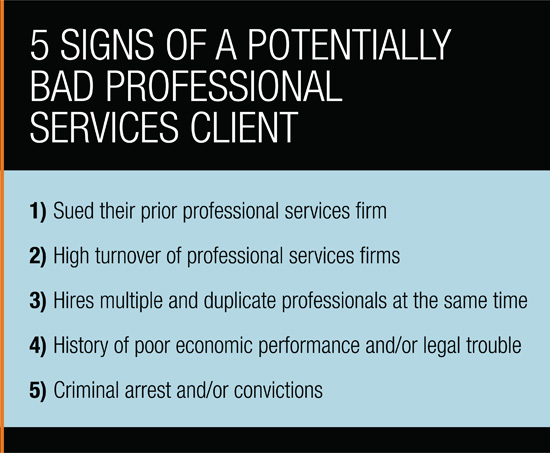Sponsored: Aspen Insurance
Minimize the Risks of Client Lawsuits

When a top litigator prepares a case for a trial, part of the process is mapping out a clear, written story to put in front of a jury. Professionals looking to avoid or minimize the impact of client lawsuits would be smart to follow that lead, according to Christopher Piety, underwriting counsel, Professional Lines Risk Management, Aspen Insurance.
“Just like when a talented lawyer faces a jury, the better prepared you are, the stronger your case will be and the more likely you will prevail,” Piety said. “That means being very clear when writing an email or a letter to a client. Approach these communications as if you were writing directly to a future jury.”
Piety explained that in the wake of several recent sizeable professional liability claims, lawyers and other professionals (i.e., accountants, architects and engineers) must deliver clear, concise written communications, to create a record of what happened along the way. “On some of the larger claims that I’ve been involved in, whether it is with lawyers, accountants, architects or engineers, it really boils down to managing client expectations. And to do that requires effective written documentation,” he said.
For example, Piety said that in a recent professional liability claim, a lawyer did nothing wrong other than failing to put into writing advice that the circumstances of the client’s case changed, which typically translates to an added risk that the desired outcome may not be achieved.
“When you write an email or letter, it’s critical to include specifics. It will go a long way to avoid potential trouble, especially if the situation ends up in court,” Piety said. “A good defense is a strong offense.”
— Christopher Piety, underwriting counsel, Professional Lines Risk Management, Aspen Insurance
“The attorney didn’t spell out in writing that the evidence no longer supported the client’s seven-figure expected outcome,” Piety said. The client eventually dropped the case and then sued the lawyer for malpractice, claiming that the attorney’s failures cost them a positive result. Without written documentation advising the client about the risks, the attorney could not prove the client had been advised.
Screen for Bad Apples
“Professionals need the courage to ‘fire’ a potential problem client should any serious red flags emerge,” Piety said. “Not every piece of business is a good one.” Along those lines, he offered a few bits of advice to avoid potential problems when choosing clients:
- Obvious Red Flag: A potential client that “burned through” multiple professional services firms. Worse, have they sued any of them?
- Reputation Check: After completing a credit check and/or litigation search, research the potential client’s reputation in the local business community.
- Financial Stability: Check to see if the client is financially sound. Sometimes, problem clients manage to transfer their financial problems to their professionals in the form of unpaid fees and/or malpractice claims.
- Available Staff: Make sure your firm is prepared and staffed to properly do the work requested.
Clarity is Critical
“When you write an email or letter, it’s critical to include specifics. It will go a long way to avoid potential trouble, especially if the situation ends up in court,” Piety said. “A good defense is a strong offense.”

Professionals need to carefully detail the scope of work when starting a new project or case, particularly if the client is also new. From a risk management perspective, it’s most critical to completely outline limitations and risks.
In addition, specific risks to various types of professionals may include:
- Law Firms: Never offer guarantees for specific results, and understand that silence can be interpreted by a jury as agreeing with a client’s unrealistic expectations.
- Architects and Engineers: Specify what you will and will not be responsible for. Never agree to indemnify anyone outside the firm.
- Accountants: Advise clients and others using your work that attest engagements only provide limited assurance of no material misstatement in the financials, but do not guarantee the absence of fraud or financial problems with the attest client’s business.
Communicate Frequently
“Throughout the entire business relationship, it’s a good idea to document any ongoing changed circumstances, no matter how seemingly small, and advise clients of any new related risks and/or performance limitations,” Piety said. He outlined these examples:
- Accountants: Quickly advise clients in writing when the client’s own poor record-keeping is causing the audit work to be more expensive and/or creating risk of material misstatement requiring additional client action.
- Lawyers: Advise clients in writing when discovering evidence that may potentially change the value of the case.
- Architects and Engineers: Communicate in writing when change orders on a project require expensive design changes that may negatively impact the overall project budget.
“Just like when a talented lawyer faces a jury, the better prepared you are, the stronger your case will be and the more likely you will prevail. That means being very clear when writing an email or a letter to a client. Approach these communications as if you were writing directly to a future jury.”
Act Promptly
Piety said the failure to act quickly often causes confusion, which can in turn lead to unnecessary and unforeseen problems. To stop that from occurring, he offered these insights:
- Communicate immediately, via writing, any emerging issues that affect a client’s expectations and your ability to meet them.
- Clients who fail to pay in a timely manner or seem unhappy early on in the relationship probably have an issue that should be addressed immediately.
In the end, only by having a clear written record of what actually occurred can professionals ensure they will reduce, or even prevent, the threat of a claim. Do not give your future opponent an opportunity to fill in the gaps with their own version of reality designed to sway a jury against you.
“Always focus on the fundamentals because fundamentals are what will really help a defense,” Piety concluded. “In so many cases, written communication will prove to be the critical factor between winning and losing.”
This article is provided for news and information purposes only and does not necessarily represent Aspen’s views and does constitute legal advice. This article reflects the opinion of the author at the time it was written taking into account market, regulatory and other conditions at the time of writing which may change over time. Aspen does not undertake a duty to update the article.
This article was produced by the R&I Brand Studio, a unit of the advertising department of Risk & Insurance, in collaboration with Aspen Insurance. The editorial staff of Risk & Insurance had no role in its preparation.










